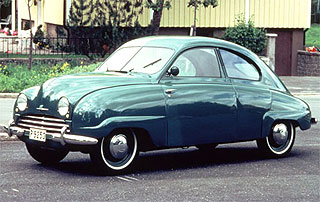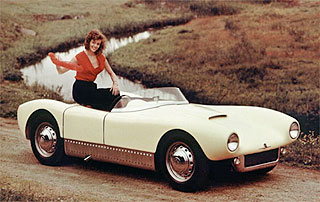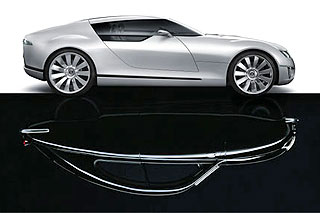

 Though the company now resides in Trollhättan, it was set up in nearby Linköping in 1937 as Svenska Aeroplan Aktiebolaget (Swedish Airplane Ltd). It made military aircraft during World War II, including the 91 Safir. The first Saab automobile, logically called the 92, was born in 1946 and made its debut a year later.
Though the company now resides in Trollhättan, it was set up in nearby Linköping in 1937 as Svenska Aeroplan Aktiebolaget (Swedish Airplane Ltd). It made military aircraft during World War II, including the 91 Safir. The first Saab automobile, logically called the 92, was born in 1946 and made its debut a year later.Production of Saab cars got underway in 1949, and more than 4 million cars have been produced since then. The first Saab models featured wind-tunnel-honed, smooth, airplane-like styling. Underneath, the 92 and its successors were more basic, with a transverse-mounted, water-cooled, two-cylinder, two-stroke 764cc engine. The first Saab 92 series was available in just one color — green — recalling the black-only Ford Model T.
Saab has never had an extensive lineup. A two-model range was introduced in the late 1960s, when the smaller 95/96 was complemented by the slightly bigger 99. By the 1990s even the 99 was replaced by a more luxury midsize car, the 900. And there was an executive Saab, developed in cooperation with Fiat. Called the 9000, it is now the 9-5.
Saab was bought in part by General Motors in 1989, and in 2000 GM took full ownership of the quirky Swedish company, which sold more than 130,000 cars in 2006 — higher sales than Jaguar.
source: insideline
No comments:
Post a Comment